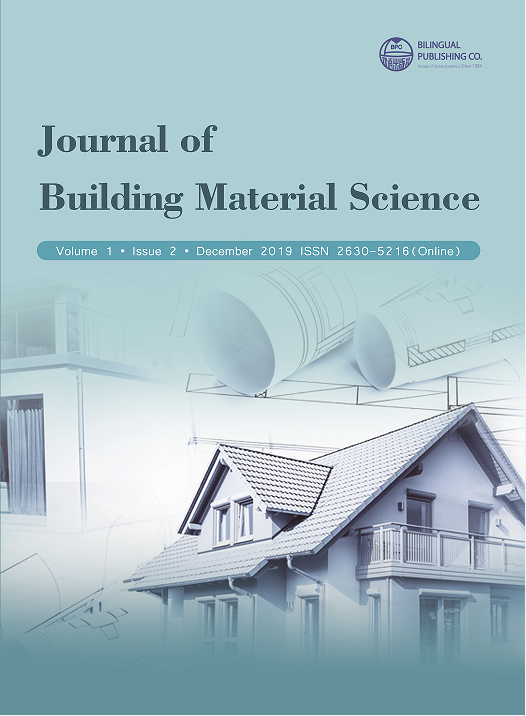
Describe the Process of Retrofitting Existing Buildings and Evaluate the Effectiveness of it in Improving the Seismic Performance of Structures in Earthquake-prone Regions
DOI:
https://doi.org/10.30564/jbms.v1i2.2543Abstract
At present, earthquakes are a serious problem for building. Severe damages and collapses of buildings were caused by earthquakes in different degrees. It is reported that there are more than 68,858 deaths and hundreds of billions RMB losses in the May 12, 2008 Great Wenchuan Earthquake [16]. So, more attention should be paid to seismic technology. In order to face the challenges of earthquake on building, the seismic retrofitting was put forward, which “is the modification of existing structures to make them more resistant to seismic activity, ground motion, or soil failure due to earthquakes”Keywords:
Building structures; Seismic technology; Effective; Vibration isolation; Damper systemReferences
[1] Archive.org. (2019). Internet Archive: Wayback Machine. [online] Available at: http://archive.org/web/web.php [Accessed 2 Aug. 2019].
[2] Aycardi, L., J. Mander, and A. Reinhorn. "Seismic Resistance of Reinforced Concrete Frame Structures Designed Only for Gravity Loads: Experimental Performance of Subassemblages." ACI Structural Journal 91.5 (1994): 552-63.
[3] Chesi & Mitsopoulou, 1981. Effect of waterproof linings on the seismic response of a building. Engineering Structures, 3(4), pp.203–209.
[4] Danila, G., Ealangi, I. & Bica, A., 2012. COMPARATIVE STUDY ON PROVISIONS REGARDING THE BASE ISOLATION AND THE SEISMIC ENERGY DISSIPATION IN THREE BUILDING CODES. Scientific Bulletin. Series, Mathematical Modeling in Civil Engineering, (4), pp.60–69.
[5] Jabary, and Madabhushi. "Tuned Mass Damper Effects on the Response of Multi-storied Structures Observed in Geotechnical Centrifuge Tests." Soil Dynamics and Earthquake Engineering 77.C (2015): 373-80.
[6] Jalali, A., Cardone, D. & Narjabadifam, P., 2011. Smart restorable sliding base isolation system. Bulletin of Earthquake Engineering, 9(2), pp.657–673.
[7] Li, H. & Huo, L., 2010. Advances in Structural Control in Civil Engineering in China. Mathematical Problems in Engineering, 2010(2010), pp.1–23.
[8] Lin, Cheng‐Horng. "Seismicity Increase after the Construction of the World's Tallest Building: An Active Blind Fault beneath the Taipei 101." Geophysical Research Letters 32.22 (2005)
[9] Mishra, S.K., Gur, S. & Chakraborty, S., 2013. An improved tuned mass damper (SMA-TMD) assisted by a shape memory alloy spring. Smart Materials and Structures, 22(9), p.16.
[10] Nanda, R.P., Agarwal, P. & Shrikhande, M., 2012. Base isolation by geosynthetic for brick masonry buildings. Journal of Vibration and Control, 18(6), pp.903–910.
[11] Pan, P. et al., 2017. Development of piezoelectric energy-harvesting tuned mass damper. Science China Technological Sciences, 60(3), pp.467–478.
[12] Poon, D., Shieh, S.S., Joseph, L.M. and Chang, C., 2004, October. Structural design of taipei 101, the world’s tallest building. In Proceedings of the CTBUH 2004 Seoul Conference, Seoul, Korea (pp. 271-278).
[13] Rana, and Soong. Parametric Study and Simplified Design of Tuned Mass Dampers. Engineering Structures 20.3 (1998): 193-204.
[14] Singh, M.P., Verma, N.P. and Moreschi, L.M., 2003. Seismic analysis and design with Maxwell dampers. Journal of Engineering Mechanics, 129(3), pp.273-282.
[15] Soleymani, M. & Khodadadi, M., 2014. Adaptive fuzzy controller for active tuned mass damper of a benchmark tall building subjected to seismic and wind loads. Structural Design of Tall and Special Buildings, 23(10), pp.781–800.
[16] Wang, Z. (2008). A preliminary report on the Great Wenchuan Earthquake. Earthquake Engineering and Engineering Vibration, 7(2), pp.225-234.
[17] Ynyeda.com. (2019).YUNNAN PROVINCE EXPLORATION AND DESIGN ASSOCIATION. [online] Available at: http://www.ynyeda.com/Home/Article/34 [Accessed 2 Aug. 2019].







 Chang Liu
Chang Liu





